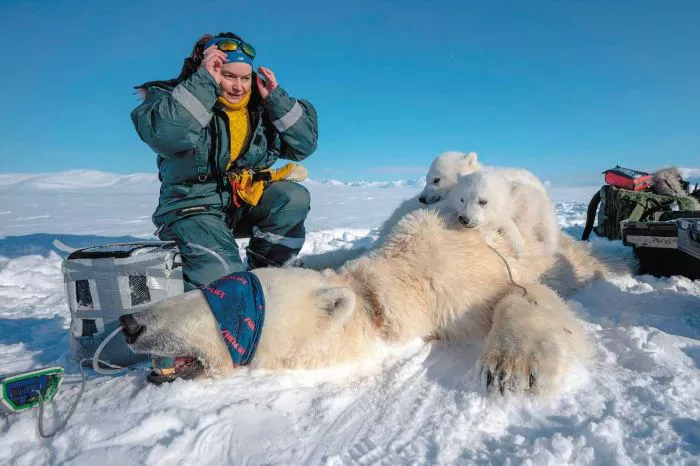A team of Arctic researchers executed a precision wildlife intervention last week, sedating a polar bear from a helicopter to collect vital biological data. The operation began when a veterinarian fired a tranquilizer dart from the aircraft’s skid, temporarily immobilizing the 500-pound predator in Canada’s northern wilderness. Within minutes of the bear’s collapse, scientists descended on the site to gather tissue samples and attach tracking equipment.
The high-risk procedure yielded multiple research specimens, including blood samples and fat biopsies that will help monitor the health of Arctic ecosystems. Each biological sample was carefully cataloged for laboratory analysis that could reveal how climate change affects polar bear physiology. The team then secured a satellite tracking collar around the sedated animal’s neck before administering a reversal drug, allowing the bear to safely regain consciousness.
This field work forms part of an urgent international effort to understand how declining sea ice impacts polar bear populations. Scientists warn the Arctic is warming four times faster than the global average, dramatically shrinking the hunting grounds these apex predators need to survive. The newly collared bear will provide months of movement data showing how the species adapts to environmental changes.
Wildlife biologists emphasize that such hands-on research, while invasive, provides irreplaceable insights for conservation planning. “Every sample tells a story about the challenges these animals face,” said lead researcher Dr. Markus Dyck, who has studied polar bears for 17 years. The team will monitor the bear’s travels while analyzing its biological markers for signs of nutritional stress or contaminant exposure – critical data as nations debate additional protections for vulnerable Arctic species.
Related Topic:
- Hyatt and Playa Hotels & Resorts Overcome Final Hurdle in Sale Process
- All-Inclusive Resorts in Mexico Offer Up to 59% Off + 2 Kids Stay Free
- Carnival Cruise Line Marks 35th Anniversary at Florida’s Port Canaveral

